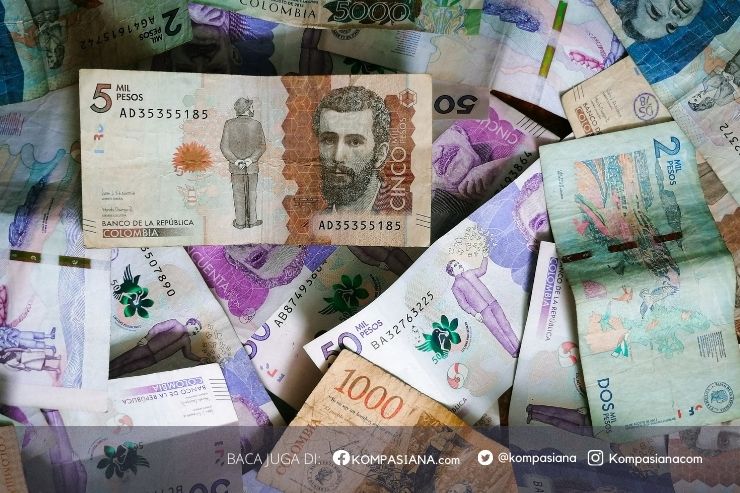Financial institutions relate to the money storage, processing savings, one of them is a bank. Indonesia has a lot of banks, including sharia bank. According to a book written by Ikit, (2015, page 45), Sharia bank is
"A bank that runs its business activities based on sharia principles and according to its type consists of sharia commercial banks and sharia financing banks. Sharia Bank is a bank that in its activities provide services in the payment traffic. While Shariah People's Financing Bank is a Syariah bank which in its activities does not provide services in the payment traffic."
As banking develops, a few conventional banks have created their business units, for example, Bank Mandiri Sharia, Bank BNI Sharia, Bank BPD Sharia, and many more. Sharia banking in running their activities is based on with syariat Islam, both of the fund, transaction, share profit, and others. Unfortunately, common people still are not interested to be customers in sharia banks. The reasons are likely they do not really understand the mechanism applied in sharia bank. Therefore, this essay will discuss three major factors considered important in the mechanism of sharia banks.
The first mechanism is about fund's principle. In raising fund, sharia banks use the principle of wadiah and the principle of mudharabah. The principle of wadiah is safekeeping of pure one requester to the other party, both individuals and legal entities that must be maintained and returned when the requester wants. Therefore, in the activity in sharia bank between responsibility and honesty are interrelated.
Said to be the responsibility, because as a legal entity, sharia bank, must keep up with a correct deposit which has been given. And when happens with the deposit, should be delivered with honesty to the requester. Deposit is meant money. Under this principle, there is no compensation required except for voluntary granting of the bank.
Whereas the principle of mudharabah is the principle of profit sharing between the owner of capital funds or providing capital to managers to conduct productive business. In this principle, the thing that happens is the first party will provide capital to the second party, then the second party will use the capital to manage profits which in turn will be shared equally. Theoretically, these two principles are indeed different, but the two principles share equally the same benefits. There is no dominant party in receiving profit. So, those are the two main principles that Sharia banks do in managing savings fund.
The second mechanism is about sharia's transaction. Transactions in sharia banks are different from conventional banks. Since sharia banks are guided by the Qur'an and Hadith, therefore Shariah transactions must be mutually rational. When the transaction happens there is no pleasure, then the transaction can be said to be 'haram'. besides the transaction is also no element of usury, tyranny, bribery. As with conventional banks, transactions in Islamic banks are also commercial and non-commercial activities. Commercial activities like an investment, buying and selling activities, service provision and many more, while non-commercial activities like a lending (qardh), zakat, infaq, alms, waqf, and many more. Essentially, that sharia transactions must be 'halal and thayibban' with no gain without risks.
The last mechanism is about profit sharing in sharia bank. The Sharia banking system promotes the concept of participation in a transaction backed by real assets, utilizing the funds at risk on a profit-and-loss-sharing basis. Participation methods used include two contracts, namely Mudharabah and Musharakah. In this mudharabah method, the bank serves as shahibul maal (the owner of the fund completely) and give the funds to the customer to be managed.
Then the profits will be divided equally in accordance with the agreement and at the end of the customer must return the capital. Banks can also request a guarantee to the customer so that later the capital can be returned. In the musharakah method, banks and customers together distribute funds, but who manage the funds are only customers. Profits and risks will be shared but in accordance with the paid capital. Thus, both mudharabah and musyarakah contracts in the distribution of profits in accordance with what has been agreed at the beginning without any exaggeration.
As the Islamic financial industry continues to grow, especially in the banking world, it is right for us to know the mechanisms applied by sharia bank, starting from the transaction system, savings, revenue sharing, and so forth. So we know what distinguishes between sharia banks and conventional banks. In conclusion, any activity (financial) undertaken by sharia banks is essentially based on the foundation of Islam in which the activity is oriented to achieve the maslahatan (goodness) and blessings so that no one will be harmed.
Reference :
Ikit. 2015. Akuntansi Penghimpunan Dana Bank Syariah.Yogyakarta: Deepublish.
Yuliana, Sa'adah. Suhel. Bashir, Abdul. 2017. Comparative Analysis of Profit Sharing
Financing Between Islamic Banks (BUS) and Islamic Rural Bank (BPRS) in Indonesia.
International Journal of Economics and Financial Issues, 7(2), 266-270.
Hanif, Muhammad. 2014. Profit & Loss Sharing in Islamic Banking and Finance. Islamic
Finance Review, 5(3), 3 September 2015.
Nazal, Abdullah Ibrahim. 2017. Impact of Islamic Banks Controller Types on Income
Statement. Journal of Islamic Banking and Finance, 5(2), 47-51.
Mihajat, Muhammad Imam S. 2016. The Comparison between Musharakah Mutanaqishah
and Conventional Leasing Structures, Which One is better?. Journal of
Islamic Banking and Finance, 33 (1), 60-67. doi: 10.15640/jibf.v5n2a7.










